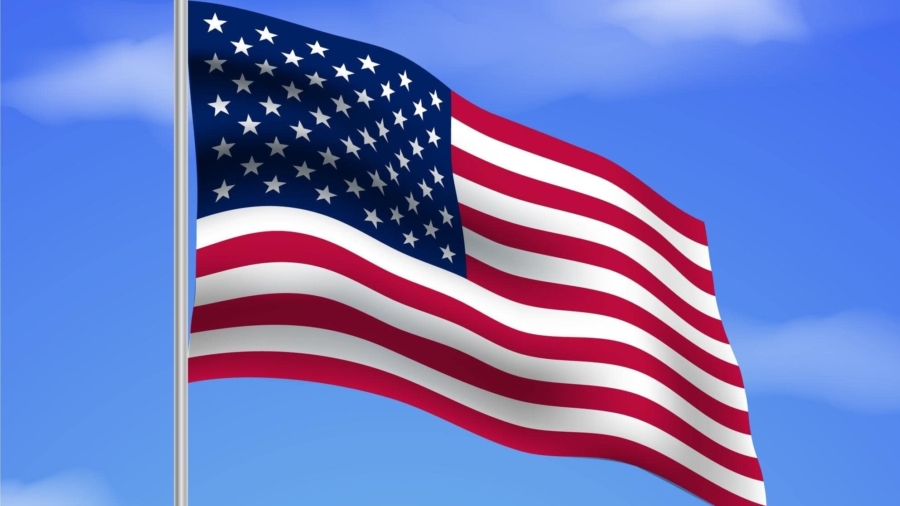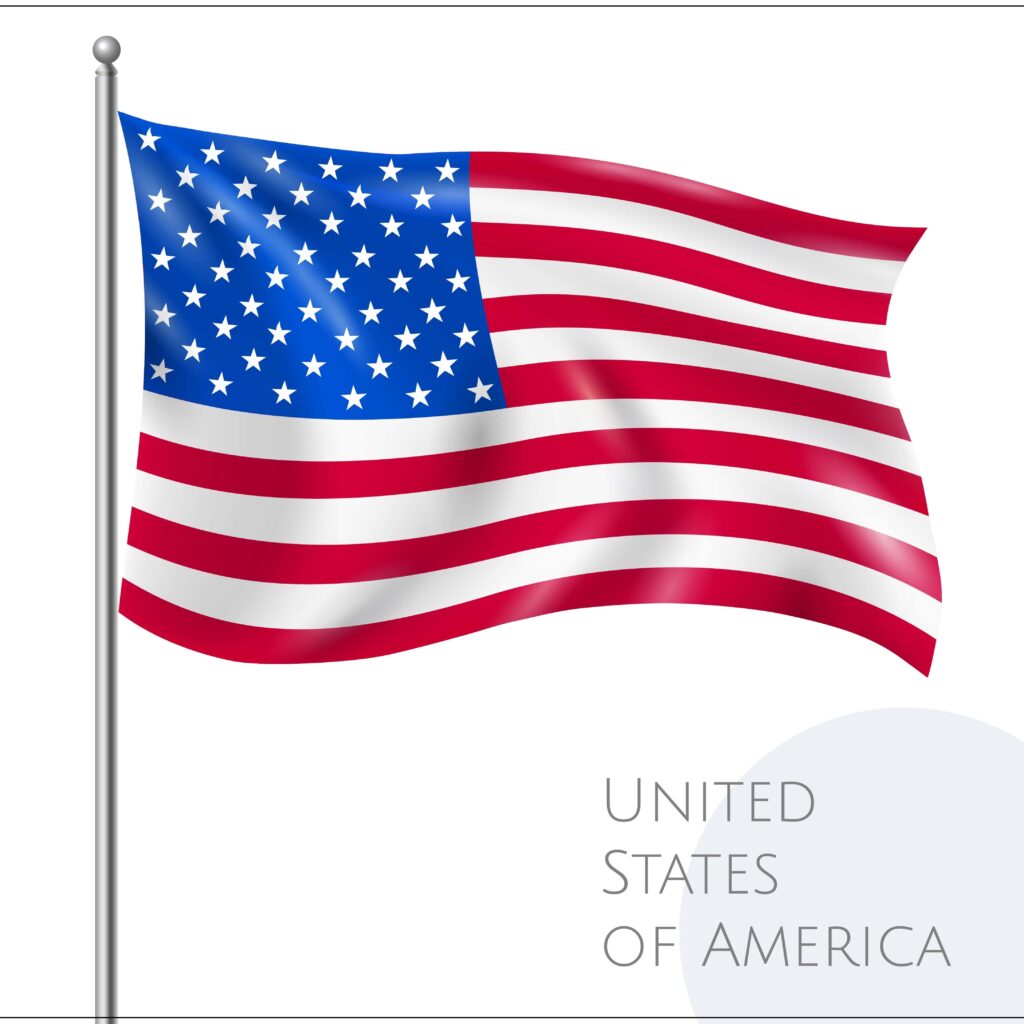
The American Flag, often referred to as the “Stars and Stripes,” stands as an enduring symbol of the United States of America, encapsulating the nation’s rich history, enduring values, and unwavering spirit. Comprising thirteen alternating red and white stripes representing the original American colonies and a field of fifty white stars on a blue background, symbolizing the current fifty states, the flag serves as a powerful emblem of unity, freedom, and patriotism.
Since July 4, 1960, the National Flag of America has had 50 white stars on a blue canton with 13 alternating red and white stripes. The 13 stripes represent the first 13 states, and the 50 stars represent the union’s 50 states. The breadth to length of the American flag is 10 to 19.
Its history is deeply rooted in the American Revolution, with the first official flag design established by the Continental Congress in 1777. Over the centuries, the flag has evolved, reflecting the growth of the nation and the admission of new states. Today, it represents not only the United States’ historical journey but also its commitment to the principles of liberty, justice, and democracy.
The American Flag is more than just a piece of cloth; it is a symbol that unites Americans, inspires pride, and represents the enduring ideals upon which the nation was founded.
Table of Contents
- Introduction – American Flag
- History of the American Flag
- Significance of the American Flag
- Symbolism of the American Flag
- Design and Evolution of the American Flag
- Elements of the American Flag’s Design
- Changes and Adaptations Over Time
- The American flag’s – Stars and Stripes
- Evolution and Adaptation
- Folding and Etiquette of the American Flag
- Flag Display Guidelines and Etiquette
- Flag Variations of the American Flag
- Historical Moments of the American Flag
- Flag Day Celebration of the American Flag
- How Americans Celebrate Flag Day
- Controversies and Debates – American Flag
- Patriotic Symbols of the American Flag
- Official Dimensions of The American Flag
- Color code of The American Flag
- Conclusion
- Read More Our Articles on Flags
- Share Your Thoughts
- FAQs: American Flag
Introduction – American Flag
The American flag, often referred to as the “Stars and Stripes,” is a powerful symbol that holds a special place in the hearts of millions of Americans. This iconic flag has a rich history, deep significance, and a multitude of symbolic elements that reflect the values and aspirations of the nation. In this blog post, we will explore the history, significance, and symbolism of the American flag, and more, shedding light on why it is more than just a piece of fabric, but a representation of the United States itself.
History of the American Flag
The history of the American flag is a tale of evolution and endurance, mirroring the growth and resilience of the United States. Here’s a concise timeline:
The First Flag (1777)
The first official American flag, with 13 stars and 13 stripes, was adopted by the Continental Congress on June 14, 1777. These 13 stars and stripes represented the original 13 colonies that declared independence from British rule.
Growth and Change (1795-1818)
As the nation expanded westward, stars and stripes were added to the flag to represent each new state. However, the stripes remained at 13, signifying the original colonies. This period saw the creation of several flag designs.
The Star-Spangled Banner (1814)
During the War of 1812, the flag gained fame when Francis Scott Key wrote the “Star-Spangled Banner” while observing the American flag flying over Fort McHenry. This event solidified the flag’s status as a symbol of national pride and resilience.
The Modern Flag (1960s-Present)
The current design of 50 stars and 13 stripes, representing 50 states and the original 13 colonies, was established in July 4, 1960. To this day, the design remains the same.

Significance of the American Flag
The American flag holds deep significance for the nation and its people:
- Unity: The flag symbolizes the unity of the United States, with the stars representing each state’s individuality and the stripes representing the union that binds them together.
- Freedom: The red stripes symbolize valor and bravery, the white stripes represent purity and innocence, and the blue field signifies vigilance, perseverance, and justice – each essential to the American character and the struggle for freedom.
- Patriotism: The flag inspires patriotism, reminding citizens of their duty to protect and uphold the principles upon which the nation was founded.
- Hope: The flag serves as a beacon of hope for countless individuals around the world who see the United States as a land of opportunity and freedom.
- Resilience: The American flag has endured through times of conflict, strife, and triumph, making it a symbol of the nation’s enduring spirit and resilience.
The American flag is more than just a piece of cloth; it is a powerful symbol of the ideals, history, and unity of the United States. Its rich history and deep symbolism continue to inspire Americans and people worldwide, making it an enduring and iconic emblem of freedom and democracy. The next time you see the Stars and Stripes waving proudly, remember the remarkable story and significance it holds for the United States of America.
Symbolism of the American Flag
Each element of the American flag carries its own symbolism:
- The stars represent the 50 states of the United States and their unity.
- The 13 stripes represent the original 13 colonies that declared independence from Britain.
- The red stripes symbolize valor and bravery.
- The white stripes stand for innocence and purity.
- The blue field, known as the “Union,” represents vigilance, perseverance, and justice.
The stars are arranged in a field of blue to create a sense of unity and cohesion among the states, with each star signifying both the individual state and its role in the larger union.
Design and Evolution of the American Flag
The American Flag, also known as the “Stars and Stripes,” is a quintessential symbol of the United States. Its design and evolution reflect the nation’s growth, unity, and resilience. In this blog post, we will explore the fascinating journey of the American Flag’s design and evolution, shedding light on its elements, changes, and adaptations over time.
The Evolution of the American Flag
The evolution of the American Flag is a testament to the nation’s history. Here is a quick overview of its development:
The First Flag (1777)
The original American Flag, adopted in 1777, featured 13 alternating red and white stripes, symbolizing the original 13 colonies, and a blue field with 13 white stars representing unity. This design embodied the spirit of the newly formed United States.
Growth and Change (1795-1818)
As the nation expanded westward, stars and stripes were added to the flag to represent each new state. However, the stripes remained at 13 to honor the founding colonies. This period witnessed the creation of various flag designs, highlighting the country’s growth.
The Star-Spangled Banner (1814)
During the War of 1812, the American Flag gained fame when Francis Scott Key wrote the “Star-Spangled Banner” while witnessing it flying over Fort McHenry. This event solidified the flag’s status as a symbol of national pride and resilience.
The Modern Flag (1960s-Present)
In July 4, 1960, the design we recognize today was established: 50 stars to represent the 50 states and 13 stripes to honor the original colonies. This modern design reflects the enduring unity of the United States.
Elements of the American Flag’s Design
The American flag’s design is both simple and profound. It consists of three key elements:
- Stars: The stars represent the states of the United States. They are arranged in a blue field, symbolizing vigilance, perseverance, and justice.
- Stripes: The alternating red and white stripes represent the original 13 colonies. Red signifies valor and bravery, while white represents purity and innocence.
- Colors: The red, white, and blue colors are not only patriotic but also carry deep symbolism. Red stands for courage and sacrifice, white symbolizes purity and innocence, and blue represents vigilance, perseverance, and justice.
Changes and Adaptations Over Time
The American Flag has undergone changes and adaptations to reflect the nation’s growth and ideals. New stars are added when states join the Union, demonstrating the United States’ ability to welcome new members while staying true to its foundational principles. These adaptations highlight the flag’s living nature, constantly evolving to mirror the nation’s progress.
The American Flag’s design and evolution are a reflection of the United States’ history, unity, and resilience. Its enduring presence reminds us of the country’s growth and commitment to its foundational values. As the nation continues to evolve, so too will the American Flag, serving as a symbol of unity, pride, and hope for generations to come. Its rich history and timeless design will continue to inspire and unite Americans across the country.
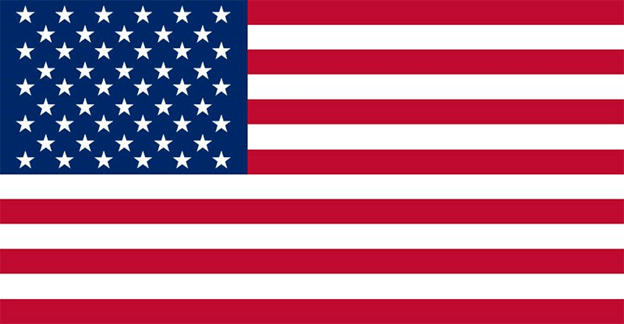
The American flag’s – Stars and Stripes
The American flag, often called the “Stars and Stripes,” is a powerful symbol that reflects the essence of the United States. It consists of two fundamental elements: the stars and stripes. Here, we’ll delve into the deep symbolism and historical significance behind these components of the American flag.
The Stars: Meaning and Representation of the American Flag:
The Stars Represent Unity:
The stars on the American flag hold a profound meaning – they symbolize unity among the states. Each of the 50 stars represents one of the 50 states that make up the United States. The arrangement of these stars on a blue field signifies the strength and cohesion of the nation. It’s a visual reminder that despite the diversity of the states, they are all part of a larger whole, bound together by shared principles and a common destiny.
The Blue Field:
The blue field, or the “Union,” serves as a backdrop for the stars. This blue field represents vigilance, perseverance, and justice. It is a constant reminder of the values that underpin the nation – a commitment to justice, the determination to persevere through challenges, and the vigilance to protect the rights and freedoms of its citizens.
The Stripes: Historical Context and Significance of the American Flag:
13 Stripes and the Original Colonies:
The 13 alternating red and white stripes on the American flag are a direct homage to the original 13 American colonies. Each stripe represents one of these colonies. Red stands for valor and bravery, while white symbolizes purity and innocence. The flag’s design reflects the nation’s roots and the courage of the early American colonists who fought for their independence from British rule.
Learn More about American Flag
Evolution and Adaptation
Over time, as new states joined the Union, the flag evolved. In 1818, the U.S. Congress passed a law that fixed the number of stripes at 13 to honor the original colonies. The stars, however, continued to be added for each new state. This adaptability of the flag symbolizes the nation’s openness to growth and change while respecting its historical foundation.
The American Flag’s stars and stripes are more than just a striking design; they are a reflection of the nation’s values, history, and identity. The stars symbolize unity and aspiration, while the stripes carry the weight of historical context and significance. Together, they tell the story of a nation that values diversity, freedom, and perseverance. As we gaze upon the Stars and Stripes, let us remember the sacrifices and struggles that have shaped the United States into the nation it is today. It serves as a reminder of the ideals and aspirations that continue to guide the American people towards a brighter future.
Folding and Etiquette of the American Flag
The American Flag, often referred to as “Old Glory,” is a symbol of pride, unity, and freedom. To show the proper respect for this emblem, it’s essential to understand the correct folding techniques, display guidelines, and flag etiquette.
The American flag, with its iconic stars and stripes, represents the spirit and values of the United States. To honor this revered symbol, it’s important to understand and follow the proper folding techniques, display guidelines, and etiquette associated with the American flag. Additionally, knowing how to respectfully dispose of a flag when it’s worn or damaged is equally crucial. Here, we’ll explore these aspects to ensure you can show the proper respect to the Stars and Stripes.
Proper Folding Techniques of the American Flag:
Folding the American flag is a tradition that emphasizes respect and care. Here’s a step-by-step guide to the proper folding technique:
- Two people holding the flag horizontally.
- Begin with the flag fully extended horizontally.
- Fold the flag in half lengthwise, aligning the edges carefully.
- Fold it in half lengthwise again, so the stars are on the outside.
- Starting at the striped end, make a triangular fold by bringing one corner of the folded edge to the opposite edge. Continue folding in a triangular manner until only the blue field with stars is visible.
- Tuck any excess fabric into the final fold to secure it.
This careful folding results in a neatly folded triangle that emphasizes the blue field with stars, signifying the nation’s unity and vigilance.
This neatly folded triangle represents the hat worn by American patriots during the Revolutionary War.
Flag Display Guidelines and Etiquette
Displaying the American flag with respect is essential. Here are some key guidelines and etiquette to follow:
- Positioning: When flying the flag on a staff or pole, it should always be above any other flags. The American flag should be at the top if more than one flag is flown from the same pole.
- Half-Staff: To show respect and mourning, the flag is flown at half-staff on certain occasions, such as Memorial Day or in response to national tragedies. It is first hoisted to the peak for an instant and then lowered to half-staff.
- Lighting: If the flag is displayed at night, it should be properly illuminated to remain visible.
- Parades: When the flag is carried in a parade or procession, it should be to the right of all other flags or banners.
- Never Touch the Ground: The American flag should never touch the ground or any other object beneath it.
Flag Disposal Procedures:
When an American flag becomes worn, faded, or damaged, it should be retired and disposed of with dignity. Here are the proper disposal procedures:
- Burning: The most common method of disposal is a ceremonial flag burning. This should be done in a dignified manner, often during a special flag retirement ceremony.
- Contact Local Veterans Organizations: Many veterans’ organizations and Boy Scout troops offer flag retirement services. They can assist in the proper disposal of old flags.
Freedom, unity, and sacrifice are all represented by the American flag. By following the correct folding techniques, display guidelines, and etiquette, and knowing how to properly dispose of a flag, you can show the utmost respect for the Stars and Stripes. These practices ensure that the flag continues to be a symbol of pride and honor for generations to come.
Flag Variations of the American Flag
One of the most recognizable flags in the world is the American flag. While the iconic American Flag with its 50 stars and 13 stripes represents the unity of the United States, each state in the nation also has its own flag, showcasing unique features and histories.
Now, we will explore the different versions of the American flag, including state flags and their distinctive features.
The National Flag – Stars and Stripes:
Before delving into state flags, let’s take a moment to appreciate the national flag:
- Stars: The stars represent the 50 states of the United States, while the blue field behind them symbolizes vigilance, perseverance, and justice.
- Stripes: The alternating red and white stripes represent the original 13 colonies. Red signifies valor and bravery, while white symbolizes purity and innocence.
Now, let’s explore some state flags that showcase their unique identities.
State Flags and Their Unique Features:
Each state in the United States has its own flag, reflecting its history, culture, and unique identity. Let’s explore a few notable state flags and their distinctive features:
1. Texas – The Lone Star State
Texas proudly flies a flag with a single star, earning its nickname as “The Lone Star State.” The blue vertical stripe on the left side symbolizes loyalty, the white represents purity, and the red stands for bravery. Texas’s flag serves as a reminder of its independent spirit and history as a former Republic.
2. California – The Bear Flag
California’s flag features a grizzly bear walking on green grass beneath a red star. This flag has its roots in the Bear Flag Revolt of 1846, during which Californians declared their independence from Mexico. Strength is symbolized by the bear, while sovereignty is symbolized by the star.
3. New Mexico – The Zia Sun Symbol
New Mexico’s flag is distinctive for its red sun symbol with four groups of four rays each, called the Zia Sun Symbol. It is a sacred emblem of the Zia Pueblo tribe and symbolizes the four cardinal directions, the four seasons, and the four stages of life.
4. Arizona – The Copper Star
Arizona’s flag showcases a copper-colored star in a field of blue. This star represents Arizona’s rich copper mining industry and the state’s nickname, “The Copper State.” The thirteen rays of red and yellow symbolize the state’s picturesque sunsets and the original thirteen colonies.
5. Maryland – A Quirk of Heraldry
Maryland’s flag is unique for its complex design, combining elements from the family crests of the Calvert and Crossland families. The alternating black and gold patterns reflect the heraldic symbols of Lord Baltimore’s family.
While the American Flag represents the nation’s unity, the state flags reflect the rich tapestry of history and culture within each state. These state flags are more than just symbols; they are a source of pride, identity, and a testament to the diversity that makes the United States so remarkable. As we look upon these flags, we celebrate not only the states they represent but also the collective strength and unity of the entire nation.
Historical Moments of the American Flag
The American Flag, with its stars and stripes, has been an enduring symbol of the United States throughout its history. Over the years, it has been an integral part of numerous iconic moments and historical events that have shaped the nation. In this blog post, we’ll explore some of these pivotal flag-related historical moments, including famous flag-raising incidents and unforgettable moments like the moon landing.
The American flag, with its stars and stripes, has been a silent witness to some of the most pivotal moments in the nation’s history. From inspiring moments of unity to serving as a symbol of resilience, the flag has played a significant role in shaping the American identity. In this blog post, we’ll explore the historical moments of the American flag, including flag-related events and famous flag-raising incidents.

Flag-Related Historical Events:
1. The Moon Landing Apollo 11 (1969)
One of the most iconic moments involving the American Flag occurred on July 20, 1969, during the Apollo 11 mission. Buzz Aldrin and astronaut Neil Armstrong made history by being the first people to walk on the moon. As they planted the American Flag on the lunar surface, it became a symbol of American achievement and a powerful representation of human exploration. The image of the flag fluttering in the moon’s low-gravity environment remains etched in the collective memory of humanity.
2. September 11, 2001:
Following the devastating terrorist attacks on September 11, 2001, a photograph of three firefighters raising the American Flag at Ground Zero in New York City became a symbol of hope, resilience, and unity. The image captured the strength and determination of the American people in the face of tragedy and has since become an enduring symbol of national pride.
3. Battle of Iwo Jima (1945):
The iconic photograph of U.S. Marines raising the American flag on Mount Suribachi during World War II became a symbol of victory and determination. It captured the nation’s spirit and commitment to freedom.

Famous Flag-Raising Incidents:
- Iwo Jima Flag-Raising (1945)
The flag-raising on Mount Suribachi during the Battle of Iwo Jima in World War II is one of the most famous and inspiring moments in American history. Associated with a Pulitzer Prize-winning photograph, the sight of U.S. Marines hoisting the American Flag became a symbol of valor, courage, and determination in the face of adversity. This event has been immortalized in statues, films, and literature, forever linking the American Flag with the sacrifices of those who serve their country.
2. The Flag on the USS Arizona, 1941: Remembering Pearl Harbor
A significant turning point in American history occurred with the attack on Pearl Harbor on December 7, 1941. The USS Arizona was one of the ships heavily damaged during the attack. Today, the American flag still flies over the USS Arizona Memorial in Pearl Harbor, serving as a somber reminder of the lives lost and the nation’s commitment to honoring their memory.
3. The Star-Spangled Banner (1814)
During the War of 1812, the British launched an attack on Fort McHenry in Baltimore, Maryland. As the battle raged on, Francis Scott Key witnessed the American Flag flying proudly over the fort in the morning light after a night of intense bombardment. This sight inspired him to write what would become the U.S. national anthem, “The Star-Spangled Banner.” The flag that survived the battle, now known as the Star-Spangled Banner Flag, is on display at the National Museum of American History.
4. The Unveiling of the 50-Star Flag (1960)
Hawaii joined the United States as the 50th state in 1960. This event led to the redesign of the American Flag to include 50 stars, one for each state. The flag’s updated design symbolized the nation’s growth and the enduring unity of the states.
The American flag is more than just a piece of cloth; it is a symbol of the United States’ history, resilience, and spirit. Throughout its existence, it has been present at key historical moments, reminding Americans of their unity and shared values. From the moon landing to moments of tragedy and triumph, the flag continues to inspire and unite the nation.
As we look back on these historical moments, let us remember the sacrifices, courage, and determination that have defined the United States and continue to shape its future.
Flag Day Celebration of the American Flag
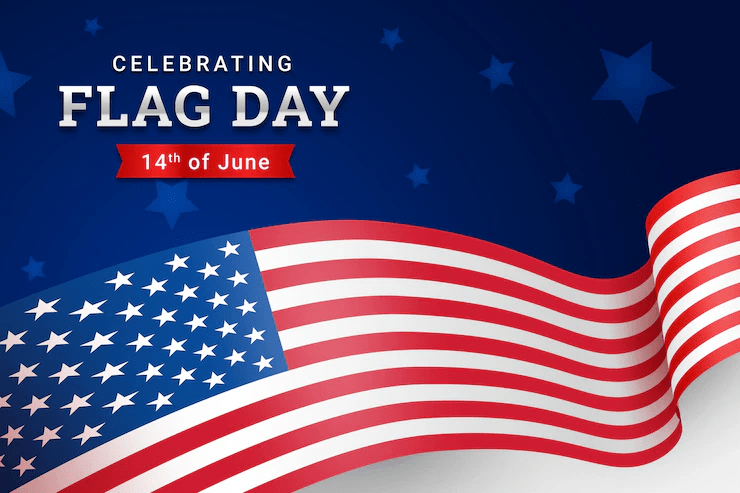
American Flag Day, celebrated every year on June 14th, is a special occasion dedicated to the American Flag, also known as the “Stars and Stripes.” It’s a day when Americans come together to commemorate the flag’s history, significance, and the enduring values it represents. Here, we will explore the history and significance of Flag Day and how Americans celebrate this patriotic occasion.
1. The Origins of Flag Day
Flag Day’s roots can be traced back to a young schoolteacher named Bernard J. Cigrand, who had a deep admiration for the American Flag. On June 14, 1885, he placed a small flag on his classroom desk and asked his students to reflect on the flag’s meaning. This date, marking the anniversary of the adoption of the Stars and Stripes in 1777, became an unofficial observance of Flag Day.
2. Official Recognition
It wasn’t until President Woodrow Wilson issued a proclamation in 1916 that Flag Day gained official recognition. However, it wasn’t until August 1949 that President Harry Truman signed an Act of Congress designating June 14th as National Flag Day.
3. Significance of Flag Day
Flag Day is a day to honor the American Flag as a symbol of freedom, unity, and the enduring principles upon which the nation was founded. It reminds Americans of their shared values and the sacrifices made to protect those values. The flag’s thirteen stripes represent the original thirteen colonies, while the fifty stars represent the fifty states.
How Americans Celebrate Flag Day
Flag Day is a time for Americans to come together, united by their love and respect for the American Flag. It serves as a reminder of the nation’s history, values, and the enduring spirit of freedom. As the Stars and Stripes wave proudly on this day, they symbolize not only the past but also the future, carrying forward the principles of liberty, justice, and unity that continue to define the United States of America.
Flag Day is celebrated in various ways across the country, fostering a sense of patriotism and unity:
- Flag Displays: Many people choose to display the American Flag outside their homes and businesses. It’s common to see neighborhoods adorned with flags on Flag Day.
- Parades: Some communities organize parades featuring patriotic displays, marching bands, and, of course, the American Flag prominently on display.
- Educational Programs: Schools and civic organizations often hold educational programs and activities to teach young Americans about the flag’s history and significance.
- Ceremonies and Retirements: Veterans’ groups may hold flag ceremonies or retire worn-out flags with dignity and respect, ensuring that damaged flags are disposed of properly.
- Volunteerism: Some individuals choose to spend Flag Day volunteering in their communities, performing acts of service as a way of giving back to their country.
Controversies and Debates – American Flag
The controversies and debates surrounding the American flag are a testament to the complexity of the nation’s history and values. While the flag is a unifying symbol for many, it also represents different things to different people. The legal protection of flag burning highlights the importance of free expression in American society, even when that expression is controversial.
Debates over flag-related issues, such as the Confederate flag and Native American flags, underscore the ongoing struggle to balance individual expression with collective values and historical sensitivities. These debates serve as a reminder that the American flag is not just a piece of cloth but a powerful symbol that reflects the diverse perspectives and ongoing conversations within the United States.
The American flag, with its stars and stripes, is a symbol of unity and pride for many. However, like any powerful symbol, it can also spark controversy and debates. Here, we will explore some of the controversies surrounding the American flag, including the legal aspects of flag burning and debates over flag-related issues like the Confederate flag.
Burning the American Flag: Legal Aspects and Controversies:
- Legal Status:
The burning of the American flag has been a subject of heated debate in the United States. In 1989, the U.S. Supreme Court ruled in the case of Texas v. Johnson that flag burning is protected as a form of symbolic speech under the First Amendment of the Constitution. This decision affirmed that while burning the flag is highly controversial and offensive to many, it is considered a protected expression of one’s views.
- Controversy and Protests:
Flag burning has been used as a form of protest by individuals and groups to convey their dissatisfaction with government policies or actions. While some see it as a powerful statement of dissent, others view it as a disrespectful act that dishonors the sacrifices made by veterans and service members.
Debates Over Flag-Related Issues:
- Confederate Flag:
The Confederate flag, also known as the “Rebel flag” or “Southern Cross,” has long been a source of controversy. While some view it as a symbol of Southern heritage, others associate it with racism and the legacy of slavery. The debate over the Confederate flag’s display on public property, particularly government buildings, has been a contentious issue in several states.
- Native American Flags:
There are ongoing debates surrounding the display of Native American flags, particularly those representing Indigenous nations. Some argue that these flags should be given equal recognition and respect alongside the American flag, while others believe that this may lead to misunderstandings or conflicts over sovereignty and identity.
Patriotic Symbols of the American Flag
The American flag, with its iconic red, white, and blue design, is a symbol that holds a special place in the hearts of Americans. It represents the United States and all the values and ideals it stands for.
Beyond its historical significance, it plays a prominent role in popular culture and serves as a powerful representation of patriotism. Now, we will explore how the American Flag is celebrated as a patriotic symbol in popular culture and its role in evoking a sense of national pride.
- The American Flag in Popular Culture
Hollywood and Film: The American Flag frequently graces the silver screen, symbolizing the indomitable spirit of the United States. It’s often used in scenes of triumph, heroism, and unity. Films like “Independence Day” and “Saving Private Ryan” feature memorable moments with the American Flag, reinforcing its significance in storytelling.
Music: Many iconic musicians incorporate the American Flag into their performances and music videos. Artists like Bruce Springsteen and Katy Perry have used the flag to symbolize American pride and resilience in their music.
Sports: The American Flag is a constant presence in the world of sports. It’s prominently displayed during the national anthem at sporting events, and athletes often wrap themselves in the flag after winning championships, emphasizing its role in celebrating national achievement.
- A Symbol of Patriotism
National Holidays: The American Flag takes center stage during national holidays like Independence Day (July 4th), Memorial Day, and Veterans Day. It’s flown with great pride during parades, fireworks displays, and other festivities, reminding citizens of their shared heritage and the sacrifices made for freedom.
Government Buildings: The American Flag is a ubiquitous presence on government buildings, symbolizing the unity and ideals of the United States. The flag’s constant presence on the Capitol, the White House, and other federal buildings is a testament to the nation’s commitment to its core values.
Education: Schools across the country emphasize the importance of the American Flag as a symbol of patriotism. Students learn about flag etiquette, the Pledge of Allegiance, and the historical significance of the flag, instilling a sense of civic pride and responsibility.
Official Dimensions of The American Flag
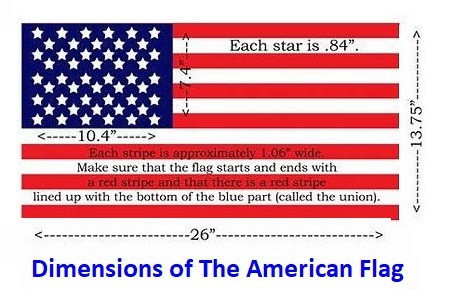
The American flag’s official dimensions and proportions are as follows:
- Dimensions: The flag has a width-to-length ratio, also known as its aspect ratio, of 1:1.9. This means that for every unit of width, the flag is 1.9 units in length.
- Size of the Union (Canton): The blue field, known as the “Union,” is located in the top-left corner (hoist side) of the flag and contains the white stars. The Union’s height is equal to the full height of the flag, and its width is typically 7/13 of the flag’s total width.
- Stars: The American flag features 50 white, five-pointed stars arranged in nine rows of alternating five and six stars. These stars are set against a blue field in the Union.
- Star Size: The diameter of each star on the flag is typically 2.25 inches (5.7 centimeters).
- Stripes: The flag has 13 horizontal stripes, which are alternately red and white. The top and bottom stripes are red, with the white stripes in between.
- Color Specifications: The official colors of the American flag are specified as “Old Glory Red” for the red stripes and “Old Glory Blue” for the blue field of the Union. The white stripes are simply white.
- Standard Sizes: While the flag’s proportions are standardized, the flag can be produced in various sizes. The most common sizes include:
- Garrison Flag: 20 feet by 38 feet (6.1 meters by 11.6 meters)
- Post Flag: 10 feet by 19 feet (3 meters by 5.8 meters)
- Storm Flag: 5 feet by 9.5 feet (1.5 meters by 2.9 meters)
These dimensions and proportions are standardized to ensure the consistent and recognizable appearance of the American flag, allowing it to be a symbol of unity and pride for the nation.
Color code of The American Flag
The American flag’s official color code, as specified by the U.S. government, is as follows:
- Old Glory Red: The official red color of the American flag is Pantone 193 C, which corresponds to the RGB color values of 186, 12, 47 in the RGB color model.
- Old Glory Blue: The official blue color of the American flag is Pantone 282 C, which corresponds to the RGB color values of 0, 56, 168 in the RGB color model.
- White: The white color used for the stripes and stars on the American flag is simply pure white.
These specific color codes ensure that the American flag’s red, white, and blue colors are accurately represented in various applications, such as flag production, printing, and digital design.
Conclusion
In this exploration of the American flag, we’ve uncovered the profound role it plays as a symbol of patriotism, unity, and identity in the United States. From its historical significance as a representation of the nation’s founding principles to its omnipresence in popular culture and important ceremonies, the American flag stands as an enduring emblem of American pride.
At its core, the American flag is not just a piece of fabric; it is a representation of the enduring values and shared identity that bind the nation together. Its stars and stripes remind us of the sacrifices made to secure freedom and justice for all. Its presence in everyday life, on national holidays, in sporting events, and in moments of celebration or reflection underscores its significance.
As the flag continues to flutter in the breeze, it is a reminder of the United States’ commitment to its core values: liberty, democracy, and the pursuit of a more perfect union. It symbolizes the nation’s resilience, its unity in diversity, and the enduring spirit of the American people.
In a world of ever-changing symbols and cultural shifts, the American flag remains a steadfast and unifying force, a testament to the ideals upon which the nation was founded. So, whether it’s proudly displayed on your front porch or seen waving high during a momentous national event, the American flag serves as a reminder of the enduring strength and identity of the America.
As we conclude our exploration of this iconic symbol, we invite you to continue embracing the American flag as a representation of the nation’s rich history, its vibrant culture, and its unwavering commitment to the values that have shaped its remarkable journey.
Read More Our Articles on Flags
Share Your Thoughts
We invite you to share your thoughts and insights about the Indian Flag:
- What does the American Flag mean to you personally?
- Have you witnessed any memorable flag-related events or celebrations?
- How do you think the flag can continue to inspire unity and pride in the future?
Your comments and perspectives are valuable in keeping the conversation alive and enriching our understanding of this iconic symbol.
FAQs: American Flag
What do the stars and stripes on the American flag represent?
Ans: The stars represent the 50 states, while the stripes represent the original 13 colonies.
Who designed the first American flag?
Ans: Betsy Ross is often credited with sewing the first American flag.
When was the first American flag created?
Ans: The first American flag, often called the “Betsy Ross flag,” is believed to have been created in 1777.
Who designed the current American flag?
Ans: The current design of the American flag, with 50 stars, was created by Robert G. Heft in 1958.
When was the current American flag design adopted?
Ans: The current design of the American flag, with 50 stars, was adopted on July 4, 1960.
Why are there 13 stripes on the American flag?
Ans: The 13 stripes symbolize the 13 original colonies that declared independence from Britain.
How many stars are on the American flag today?
Ans: There are currently 50 stars, each representing one of the 50 states.
What is the significance of the red, white, and blue colors on the American flag?
Ans: Red symbolizes valor and bravery, white represents purity and innocence, and blue stands for vigilance, perseverance, and justice.
When is Flag Day celebrated in the United States?
Ans: Flag Day is celebrated on June 14th each year, commemorating the adoption of the American flag in 1777.
What is the proper way to display the American flag?
Ans: The flag should be displayed with the stars on the upper left (known as the union) and should never touch the ground.
Can the American flag be flown at night?
Ans: Yes, the flag can be flown at night if it’s properly illuminated.
What is the significance of the 50 stars on the flag?
Ans: The 50 stars represent the unity of the 50 states in the United States.
What is the history of the Pledge of Allegiance to the American flag?
Ans: The Pledge of Allegiance was written by Francis Bellamy in 1892 and officially adopted in 1942. It’s a declaration of loyalty to the United States and its flag.
What are the rules for folding the American flag?
Ans: The American flag is traditionally folded into a triangle with the stars displayed on top, following a specific ceremonial process.
Why is the American flag often flown at half-staff?
Ans: The flag is flown at half-staff as a sign of respect and mourning during times of national tragedy or to honor individuals who have passed away.
What is the history of the 51-star flag proposal?
Ans: The 51-star flag has been proposed multiple times in anticipation of adding a new state to the Union. It has not been officially adopted.
Can the American flag be used as clothing or in advertising?
Ans: While it’s legal to use the flag in clothing and advertising, there are guidelines for respectful use.
What is the largest American flag ever made?
Ans: The Superflag, created in 1992, is considered one of the largest American flags ever made, measuring 505 feet by 225 feet.
What are the rules for retiring an old or tattered American flag?
Ans: Old or damaged flags should be retired in a respectful manner, often through a flag disposal ceremony or by contacting a local veterans’ organization.
Why are American flags often flown at half-staff on Memorial Day and Veterans Day?
Ans: Flags are lowered to half-staff on these days to honor and remember the sacrifices of military personnel.
What is the symbolism of the American bald eagle on the flag?
Ans: The bald eagle symbolizes freedom, courage, and the United States itself.
What is the history of the 15-star and 15-stripe American flag?
Ans: The 15-star and 15-stripe flag was used from 1795 to 1818, reflecting the addition of new states to the Union.
Who is authorized to lower the American flag to half-staff?
Ans: The President of the United States and state governors have the authority to order the flag to be flown at half-staff.
What is the significance of the flag-folding ceremony at military funerals?
Ans: Each fold in the flag during the ceremony has symbolic meaning, representing values such as life, remembrance, and honor.
What is the history of the “Star-Spangled Banner” national anthem?
Ans: The national anthem was written by Francis Scott Key during the War of 1812 and celebrates the resilience of American troops.
What are some common flag-related myths and misconceptions?
Ans: Address common misconceptions or myths about the American flag, such as the urban legend about flag colors changing meanings.
What is the history of the American flag’s nickname, “Old Glory”?
Ans: “Old Glory” is a nickname given to the American flag by Captain William Driver, a 19th-century sea captain who cherished his flag.

